

E-Books → Impact of Artificial Intelligence, and the Fourth Industrial Revolution on Business Success
Published by: voska89 on 2-08-2022, 18:08 |  0
0
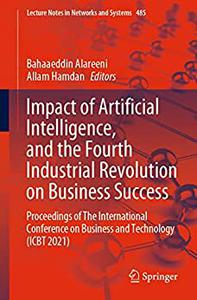
Impact of Artificial Intelligence, and the Fourth Industrial Revolution on Business Success
English | 2023 | ISBN: 3031080920 | 1026 Pages | PDF (True) | 16 MB
This book constitutes the refereed proceedings of the International Conference on Business and Technology (ICBT2021) organized by EuroMid Academy of Business & Technology (EMABT), held in Istanbul, between 06-07 November 2021.
E-Books → Fish Pathology, Fourth Edition
Published by: voska89 on 31-07-2022, 21:11 |  0
0
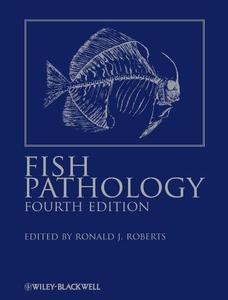
Fish Pathology, Fourth Edition By
2012 | 587 Pages | ISBN: 1444332821 | PDF | 18 MB
Fish Pathology is the definitive, classic and essential book on the subject, providing in-depth coverage across all major aspects of fish pathology. This new, fully updated and expanded fourth edition builds upon the success of the previous editions which have made Fish Pathology the best known and most respected book in the field, worldwide.Commencing with a chapter covering the aquatic environment, the book provides comprehensive details of the anatomy and physiology of teleosts, pathophysiology and sytematic physiology, immunology, neoplasia, virology, parasitology, bacteriology, mycology, nutritional pathology and other non-infectious diseases. A final chapter provides extremely useful details of the most widely-used and trusted laboratory methods in the area. Much new infomation is included in this new edition, including enhanced coverage of any diseases which have become commercially significant since publication of the previous edition Beautifully illustrated in full colour throughout with many exceptional photographs, Fish Pathology, Fourth Edition, is an essential purchase for fish pathologists, fish veterinarians, biologists, microbiologists and immunologists, including all those working in diagnostic services worldwide. Personnel working in fish farming and fisheries will also find much of great use and interest within the book's covers. All libraries in universities and research establishments where biological and veterinary sciences are studied and taught should have copies of this landmark publication on their shelves.Content: Chapter 1 The Aquatic Environment (pages 1-16): R. J. RobertsChapter 2 The Anatomy and Physiology of Teleosts (pages 17-61): R.J. Roberts and A.E. EllisChapter 3 The Pathophysiology and Systematic Pathology of Teleosts (pages 62-143): R.J. Roberts and H.D. RodgerChapter 4 The Immunology of Teleosts (pages 144-166): C.J. Secombes and A.E. EllisChapter 5 Neoplasia of Teleosts (pages 167-185): R.J. RobertsChapter 6 The Virology of Teleosts (pages 186-291): D.A. Smail and E.S. MunroChapter 7 The Parasitology of Teleosts (pages 292-338): R. WoottenChapter 8 The Bacteriology of Teleosts (pages 339-382): R.J. RobertsChapter 9 The Mycology of Teleosts (pages 383-401): R.J. RobertsChapter 10 The Nutritional Pathology of Teleosts (pages 402-424): R.W. HardyChapter 11 Miscellaneous Non?Infectious Diseases (pages 425-438): R.J. RobertsChapter 12 Laboratory Methods (pages 439-481): R.J. Roberts, D.A. Smail and E.S. Munro
E-Books → Fish Catching Methods of the World, Fourth Edition
Published by: voska89 on 31-07-2022, 21:11 |  0
0
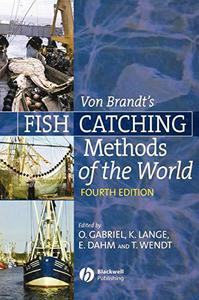
Fish Catching Methods of the World, Fourth Edition By
2005 | 533 Pages | ISBN: 0852382804 | PDF | 10 MB
In the sixteen years since the last edition of Von Brant's classic work was published, fishing and fisheries have undergone vast changes. Not only has there been great progress in the development of new tools, materials and techniques, but the industry has seen an increasing need to address controversial issues such as declining fish stocks, enormous quantities of bycatch and discard and the impact of towed fishing gear on the environment. Fully revised and updated to reflect such changes, the fourth edition of this widely read and popular book offers:A unique, comprehensive survey of the evolution of fishing methods throughout the world Approximately 750 illustrations showing the extensive range of methods, techniques and equipment used in fishing across the globe Fishing gear classified according to the FAO system Additional chapters: Fishing Effects on Fish Stocks and Environment and Fishery and Gear ResearchAll researchers, fisheries scientists, fisheries students, administrators and libraries in universities and research establishments where fish and fisheries are studied and taught will find this book a valuable addition to their shelves. Commercial and sports fishermen will also find Fish Catching Methods of the World a fascinating and vital reference.Content: Chapter 1 Catching Methods in Fisheries: An Introduction (pages 1-11): Chapter 2 Fishing by Gathering (pages 12-20): Chapter 3 Male and Female Divers (pages 21-30): Chapter 4 Animals as a Help in Fisheries (pages 31-41): Chapter 5 Fish Harvesting After Stupefying (pages 42-52): Chapter 6 Spearing, Harpooning and Shooting Fish (pages 53-75): Chapter 7 Fishing with Clamps, Tongs, Rakes and Wrenching Gear (pages 76-82): Chapter 8 Line Fishing: Basic Implements (pages 83-104): Chapter 9 Line Fishing: Gear and Methods (pages 105-135): Chapter 10 Fishing for Sport and Recreation (pages 136-149): Chapter 11 Attracting, Concentrating and Frightening Fish (pages 150-163): Chapter 12 Pole?Hooks and Rippers (pages 164-180): Chapter 13 Net Material and the Art of Net?Making (pages 181-189): Chapter 14 Natural and Artificial Shelters (pages 190-198): Chapter 15 Permanent and Temporary Barriers (pages 199-214): Chapter 16 Trapping (pages 215-251): Chapter 17 Fishing in the Air (pages 252-263): Chapter 18 Mechanical Fishing Gear: Traps, Lines and Snares (pages 264-274): Chapter 19 Gillnetting (pages 275-290): Chapter 20 Entangling Nets (pages 291-304): Chapter 21 The Drive?in Fishery (pages 305-313): Chapter 22 Cover Pots and Cast Nets (pages 314-328): Chapter 23 Liftnets and Fish Wheels (pages 329-349): Chapter 24 From the Scoop Basket to the Stow Net (pages 350-375): Chapter 25 Dredges and Beamtrawls (pages 376-391): Chapter 26 Fishing with Bottom Trawls (pages 392-413): Chapter 27 Trawl Fisheries in three Dimensions: Fishing with Mid?Water Trawls (pages 414-430): Chapter 28 Seining in Fresh and Sea Water (pages 431-448): Chapter 29 Fish Shoals and Surrounding Nets (pages 449-472): Chapter 30 Fishing Systems and Harvesting Machines (pages 473-482): Chapter 31 Fishery and Gear Research (pages 483-492): Chapter 32 Fishing Effects on Fish Stocks, Other Marine Animals and the Environment (pages 493-506):
E-Books → Fiber-Optic Communication Systems, Fourth Edition
Published by: voska89 on 31-07-2022, 21:09 |  0
0

Fiber-Optic Communication Systems, Fourth Edition By Govind P. Agrawal(auth.)
2010 | 624 Pages | ISBN: 0470505117 | PDF | 18 MB
This book provides a comprehensive account of fiber-optic communication systems. The3rd edition ofthis book is used worldwide as a textbook in many universities. This4th edition incorporates recent advances that have occurred, in particular two new chapters. One deals with the advanced modulation formats (such as DPSK, QPSK, and QAM) that are increasingly being used for improving spectral efficiency of WDM lightwave systems. The second chapterfocuses onnew techniques such as all-optical regeneration that are under development and likely to be used in future communication systems. All other chaptersare updated, as well.Content: Chapter 1 Introduction (pages 1-23): Chapter 2 Optical Fibers (pages 24-78): Chapter 3 Optical Transmitters (pages 79-127): Chapter 4 Optical Receivers (pages 128-181): Chapter 5 Lightwave Systems (pages 182-222): Chapter 6 Multichannel Systems (pages 233-294): Chapter 7 Loss Management (pages 295-344): Chapter 8 Dispersion Management (pages 345-406): Chapter 9 Control of Nonlinear Effects (pages 407-458): Chapter 10 Advanced Lightwave Systems (pages 459-510): Chapter 11 Optical Signal Processing (pages 511-577):
E-Books → Industrial Organic Chemistry, Fourth Edition
Published by: voska89 on 28-07-2022, 23:25 |  0
0

Industrial Organic Chemistry, Fourth Edition By Prof. Dr. Klaus Weissermel, Prof. Dr. Hans?Jurgen Arpe(auth.)
2003 | 499 Pages | ISBN: 3527305785 | PDF | 18 MB
This bestselling standard, now in its fourth, completely revised English edition, is an excellent source of technological and economic information on the most important precursors and intermediates used in the chemical industry. The translation into eight languages and the five German and four English editions clearly evidence the popularity of this book. '... it is where I look first to get a quick overview of the manufacturing process of a product... Weissermel/Arpe has been serving me for years as an indispensable reference work.' (Berichte der Bunsengesellschaft fur Physikalische Chemie) 'It would be unkind and misleading to call this book a poor man's Kirk Othmer, but it could almost be described as an encyclopedia... it is easy to read and one has to admire the authors' dedication and endeavor in getting so much into a single volume. They have provided a book that is interesting reading as well as being an excellent reference. It is a highly recommended book, which I hope the authors will find the energy to continue updating on a regular basis.' (Chemistry in Britain) '...it should be ready to hand to every chemist or process engineer involved directly or indirectly with industrial organic chemistry. It should be in the hand of every higher-graduate student, especially if chemical technology is not part of the study, like in many college universities...' (Tenside-Surfactants-Detergents)Content: Chapter 1 Various Aspects of the Energy and Raw Material Supply (pages 1-13): Chapter 2 Basic Products of Industrial Syntheses (pages 15-57): Chapter 3 Olefins (pages 59-89): Chapter 4 Acetylene (pages 91-105): Chapter 5 1,3?Diolefins (pages 107-126): Chapter 6 Syntheses involving Carbon Monoxide (pages 127-144): Chapter 7 Oxidation Products Ethylene (pages 145-192): Chapter 8 Alcohols (pages 193-215): Chapter 9 Vinyl?Halogen and Vinyl?Oxygen Compounds (pages 217-238): Chapter 10 Components for Polyamides (pages 239-266): Chapter 11 Propene Conversion Products (pages 267-312): Chapter 12 Aromatics - Production and Conversion (pages 313-336): Chapter 13 Benzene Derivatives (pages 337-385): Chapter 14 Oxidation Products of Xylene and Naphthalene (pages 388-405):
E-Books → Immunization Childhood and Travel Health, Fourth Edition
Published by: voska89 on 28-07-2022, 23:22 |  0
0

Immunization: Childhood and Travel Health, Fourth Edition By George C. Kassianos(auth.)
2001 | 432 Pages | ISBN: 0632055812 | PDF | 16 MB
Immunization: Childhood and Travel Health provides an all-encompassing reference for all those working in primary care, secondary care paediatric wards, immunization centres and travel clinics, as well as medical students and candidates working for higher examinations. The Fourth Edition has been comprehensively updated and the travel section completely revised. The book gives a thorough introduction to the history of immunization, vaccine technology and immunology, and compares international schedules of routine immunizations. Each vaccine is then presented separately, including contraindications, local and general side and adverse effects, administration advice, special precautions and notes, vaccine availability, storage, and well-referenced comments on issues surrounding each vaccine, including controversies. A description of the infection caused by the relevant microorganisms follows, together with data on disease notifications and immunization coverage. A considerable number of maps illustrate endemicity of diseases.One section is dedicated to issues relevant to primary care such as immunization fees and targets, audit, electronic recall systems, patient group directions and issues surrounding the immunization work of the practice nurse. The Fourth Edition includes an extensive section on travel health, which includes the latest travel statistics, travel clinics, detailed advice to travellers and legal issues that may arise. A considerable amount of information is included on air travel, contraindications to travel, and high altitude sickness. Specific information is given on advising travellers at risk because of pre-existing conditions, and how to best deal with the returned traveller. Advice is provided for each disease, including malaria, which is covered in detail.The last section contains information on notifiable diseases, reciprocal healthcare agreements, contact numbers for Embassies and High Commissions in London, a world travel advice checklist, and an extensive list of sources of travel information with contact address.Content: Chapter 1 History of Immunization (pages 3-7): Chapter 2 Timescale of Vaccine Introduction in the UK (page 8): Chapter 3 Immunology, Immunization and Vaccine Development (pages 9-20): Chapter 4 The Cold Chain and Vaccine Storage (pages 21-22): Chapter 5 Transmission of Infection (page 23): Chapter 6 Infectivity and Exclusion Period of Infections (page 24): Chapter 7 Immunization in Practice (pages 25-29): Chapter 8 Expanded Programme on Immunization (pages 30-36): Chapter 9 Vaccine Damage Payment Scheme (page 37): Chapter 10 Information Sheet for Parents (pages 38-40): Chapter 11 Viral and Bacterial Vaccines (page 41): Chapter 12 Special Precautions for All Vaccines (pages 42-43): Chapter 13 Special Precautions for Live Vaccines (pages 44-45): Chapter 14 Treating Anaphylaxis (pages 46-47): Chapter 15 Complications of Infectious Diseases and Vaccines: An Aide?Memoire (pages 51-53): Chapter 16 Diphtheria/Tetanus/Pertussis (DTP) Combined and Diphtheria/Tetanus (DT, Td) Combined (pages 54-56): Chapter 17 Diphtheria (pages 57-60): Chapter 18 Tetanus (pages 61-64): Chapter 19 Pertussis (pages 65-75): Chapter 20 Haemophilus influenzae b (pages 76-80): Chapter 21 Poliomyelitis (pages 81-87): Chapter 22 Measles/Mumps/Rubella Combined Vaccine (pages 88-99): Chapter 23 Measles (pages 100-103): Chapter 24 Mumps (pages 104-106): Chapter 25 Rubella (pages 107-111): Chapter 26 Meningococcal Infection (pages 112-121): Chapter 27 Tuberculosis (pages 122-132): Chapter 28 Anthrax (pages 135-136): Chapter 29 Cholera (pages 137-140): Chapter 30 Hepatitis A (pages 141-150): Chapter 31 Hepatitis A and Typhoid Combined Vaccine (pages 151-152): Chapter 32 Hepatitis B (pages 153-176): Chapter 33 Hepatitis A and B Combined Vaccine (pages 177-179): Chapter 34 Influenza (pages 180-192): Chapter 35 Japanese B Encephalitis (pages 193-196): Chapter 36 Plague (pages 197-198): Chapter 37 Pneumococcal Infection (pages 199-205): Chapter 38 Rabies (pages 206-214): Chapter 39 Tick?2 Encephalitis (pages 215-219): Chapter 40 Typhoid (pages 220-225): Chapter 41 Varicella (pages 226-230): Chapter 42 Yellow Fever (pages 231-235): Chapter 43 Immunization Fees and the UK GP (pages 239-247): Chapter 44 Immunization and Audit (pages 248-251): Chapter 45 Electronic Recall Systems for Completion of Immunization (pages 252-260): Chapter 46 The Practice Nurse and Immunization (pages 261-266): Chapter 47 Practice Nurse: Pre?Vaccination Checklist (pages 267-268): Chapter 48 Introduction to Travel Health (pages 271-275): Chapter 49 Travel Clinics (pages 276-279): Chapter 50 Advice to Travellers (pages 280-290): Chapter 51 Legal Aspects of Advice for Travellers (pages 291-292): Chapter 52 Air Travel (pages 293-304): Chapter 53 Tunnel Travel (page 305): Chapter 54 Motion Sickness (pages 306-307): Chapter 55 Sea Cruises (page 308): Chapter 56 High Altitude Sickness (pages 309-310): Chapter 57 Travellers at Risk (pages 311-329): Chapter 58 The Returned Traveller (pages 330-363): Chapter 59 Malaria (pages 364-388): Chapter 60 International Society of Travel Medicine (page 391): Chapter 61 Specimen Immunization Exemption Certificate (page 392): Chapter 62 Notifiable Diseases (pages 393-394): Chapter 63 Reciprocal Healthcare Agreements Between the UK and Other Non?EEA Countries (pages 395-398): Chapter 64 Sources of Travel Information: Useful Addresses/Telephone Numbers/Websites (pages 399-411): Chapter 65 Embassies and High Commissions in London (pages 412-414): Chapter 66 World Travel Advice Checklist (pages 415-421): Chapter 67 Travel Vaccines Administration Summary (pages 422-423):
E-Books → The Oil Palm, Fourth Edition
Published by: voska89 on 26-07-2022, 20:44 |  0
0
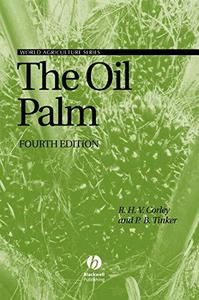
The Oil Palm, Fourth Edition By
2003 | 594 Pages | ISBN: 0632052120 | PDF | 8 MB
The oil palm is the world's most valuable oil crop. With palm oil production increasing by more than 50% in the last decade of the twentieth century and set to double in the next twenty years, it has never before been so important to understand the history, use and cultivation of this fascinating crop.There have been many new developments since the third edition of The Oil Palm in 1988, particularly in the fields of clonal propagation, agronomy, breeding and molecular genetics. This new edition has been completely rewritten, and is the first book to record and explore these and many other developments. The book traces the origins and progress of the industry, and describes the basic science underlying the physiology, breeding and nutrition of the oil palm. It covers both cutting-edge research, and wider issues such as genetic modification of the crop, the promise of clonal propagation, and the effects of palm oil on human health. The practical problems of maximising yield of oil and kernels are discussed in relation to the present 'yield gap' and oil extraction rate decline in Malaysia. The oil palm is also compared to the soya bean and other oil crops, and the recent history of the price of oil palm products is considered in the light of this. The Oil Palm makes an essential contribution to oil palm research and will be an indispensable reference and guide for agricultural students, researchers and all those working, worldwide, in the oil palm industry.Content: Chapter 1 The Origin and Development of the Oil Palm Industry (pages 1-26): Chapter 2 The Classification and Morphology of the Oil Palm (pages 27-51): Chapter 3 The Climate and Soils of the Oil Palm?Growing Regions (pages 53-88): Chapter 4 Growth, Flowering and Yield (pages 89-131): Chapter 5 Selection and Breeding (pages 133-199): Chapter 6 Vegetative Propagation and Biotechnology (pages 201-215): Chapter 7 Seed Germination and Nurseries (pages 217-232): Chapter 8 Site Selection and Land Preparation (pages 233-269): Chapter 9 The Establishment of Oil Palms in the Field (pages 271-285): Chapter 10 Care and Maintenance of Oil Palms (pages 287-325): Chapter 11 Mineral Nutrition of Oil Palms (pages 327-389): Chapter 12 Diseases and Pests of the Oil Palm (pages 391-444): Chapter 13 The Products of the Oil Palm and Their Extraction (pages 445-466): Chapter 14 Marketing, Economics, End Use and Human Health (pages 467-477): Chapter 15 Concluding Remarks (pages 479-481):
E-Books → Measuring Colour, Fourth Edition
Published by: voska89 on 26-07-2022, 20:14 |  0
0
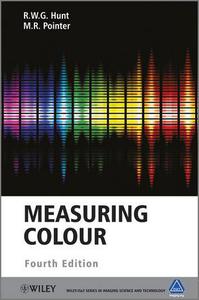
Measuring Colour, Fourth Edition By R. W. G. Hunt, M. R. Pointer(auth.), Michael A. Kriss(eds.)
2011 | 479 Pages | ISBN: 1119975379 | PDF | 11 MB
The classic authority on colour measurement now fully revised and updated with the latest CIE recommendations The measurement of colour is of major importance in many commercial applications, such as the textile, paint, and foodstuff industries; as well as having a significant role in the lighting, paper, printing, cosmetic, plastics, glass, chemical, photographic, television, transport, and communication industries. Building upon the success of earlier editions, the 4th edition of Measuring Colour has been updated throughout with new chapters on colour rendering by light sources; colorimetry with digital cameras; factors affecting the appearance of coloured objects, and details of new CIE colour appearance models. Key features: Presents colour measurement, not simply as a matter of instrumentation and engineering, but also involving the physiology and psychology of the human observer. Covers the principles of colour measurement rather than a guide to instruments. Provides the reader with the basic facts needed to measure colour. Describes and explains the interactions between how colour is affected by the type of lighting, by the nature of the objects illuminated, and by the properties of the colour vision of observers. Includes many worked examples, and a series of Appendices provides the numerical data needed in many colorimetric calculations. The addition of 4th edition co-author, Dr. Pointer, has facilitated the inclusion of extensive practical advice on measurement procedures and the latest CIE recommendations.Content: Chapter 1 Colour Vision (pages 1-17): Chapter 2 Spectral Weighting Functions (pages 19-40): Chapter 3 Relations Between Colour Stimuli (pages 41-72): Chapter 4 Light Sources (pages 73-97): Chapter 5 Obtaining Spectral Data and Tristimulus Values (pages 99-115): Chapter 6 Metamerism and Colour Constancy (pages 117-142): Chapter 7 Colour Rendering by Light Sources (pages 143-154): Chapter 8 Colour Order Systems (pages 155-195): Chapter 9 Precision and Accuracy in Colorimetry (pages 197-217): Chapter 10 Fluorescent Colours (pages 219-230): Chapter 11 RGB Colorimetry (pages 231-240): Chapter 12 Colorimetry with Digital Cameras (pages 241-256): Chapter 13 Colorant Mixtures (pages 257-265): Chapter 14 Factors Affecting the Appearance of Coloured Objects (pages 267-292): Chapter 15 The CIE Colour Appearance Model CIECAM02 (pages 293-324): Chapter 16 Models of Colour Appearance for Stimuli of Different Sizes (pages 325-328): Chapter 17 Model of Colour Appearance for Unrelated Colours in Photopic and Mesopic Illuminances (pages 329-334):
E-Books → The Tax Law of Charitable Giving, Fourth Edition
Published by: voska89 on 23-07-2022, 10:18 |  0
0
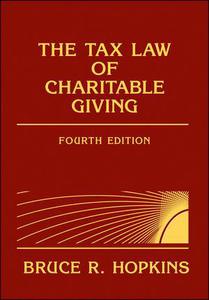
The Tax Law of Charitable Giving, Fourth Edition By Bruce R. Hopkins(auth.)
2010 | 815 Pages | ISBN: 0470560606 | PDF | 9 MB
The Tax Law of Charitable Giving, Fourth Edition is completely revised, revamped, and updated. Written in plain English, it can help lawyers, managers, and development directors in tax-exempt organizations make sure they are up to date on all current regulations pertaining to charitable gifts. Detailed documentations and citations are provided. As well, references to regulations, rulings, cases, and tax literature are included. Nonprofit lawyers, accountants, and fundraising professionals can ensure they are well prepared to make decisions about their organization's fund-development program.Content: Chapter 1 Charitable Giving Law: Basic Concepts (pages 1-25): Chapter 2 The United States Tax System: An Overview (pages 27-58): Chapter 3 Fundamental Concepts (pages 59-129): Chapter 4 Gifts of Money and Property (pages 131-152): Chapter 5 Fundamentals of Planned Giving (pages 153-176): Chapter 6 Timing of Charitable Deductions (pages 177-196): Chapter 7 Percentage Limitations (pages 197-233): Chapter 8 Estate and Gift Tax Considerations (pages 235-278): Chapter 9 Special Gift Situations (pages 279-381): Chapter 10 Other Aspects of Deductible Giving (pages 383-432): Chapter 11 Valuation of Partial Interests (pages 433-443): Chapter 12 Charitable Remainder Trusts (pages 445-524): Chapter 13 Pooled Income Funds (pages 525-544): Chapter 14 Charitable Gift Annuities (pages 545-552): Chapter 15 Other Gifts of Remainder Interests (pages 553-563): Chapter 16 Charitable Lead Trusts (pages 565-575): Chapter 17 Gifts of and Using Life Insurance (pages 577-595): Chapter 18 International Giving by Individuals during Lifetime (pages 597-609): Chapter 19 International Giving by Individuals through Estates (pages 611-618): Chapter 20 International Giving by Corporations (pages 619-629): Chapter 21 Substantiation and Appraisal Requirements (pages 631-653): Chapter 22 Disclosure Requirements (pages 655-666): Chapter 23 Special Events, Corporate Sponsorships, and Donor?Advised Funds (pages 667-678): Chapter 24 Reporting Requirements (pages 679-710): Chapter 25 State Fundraising Regulation (pages 711-721):
E-Books → Rethinking Old Age Theorising the Fourth Age
Published by: voska89 on 13-07-2022, 12:12 |  0
0

Paul Higgs, "Rethinking Old Age: Theorising the Fourth Age"
English | ISBN: 1137383992 | 2015 | 184 pages | PDF | 6 MB
With the aspiration for a long life now achievable for many individuals, the status of old age as a distinct social position has become problematic. In this radical re-examination of the nature of old age, Paul Higgs and Chris Gilleard reveal the emergence of a 'fourth age' that embodies the most feared and marginalised aspects of old age, conceptually linked to and yet distinct from traditional models of old age.



